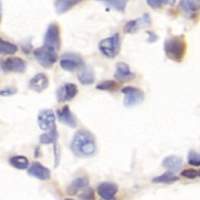 Smart Citations
Smart CitationsSee how this article has been cited at scite.ai
scite shows how a scientific paper has been cited by providing the context of the citation, a classification describing whether it supports, mentions, or contrasts the cited claim, and a label indicating in which section the citation was made.
Mucin1 relieves acute lung injury by inhibiting inflammation and oxidative stress
Acute lung injury/acute respiratory distress syndrome (ALI/ARDS) is a kind of diffuse inflammatory injury caused by various factors, characterized by respiratory distress and progressive hypoxemia. It is a common clinical critical illness. The aim of this study was to investigate the effect and mechanism of the Mucin1 (MUC1) gene and its recombinant protein on lipopolysaccharide (LPS)-induced ALI/ARDS. We cultured human alveolar epithelial cell line (BEAS-2B) and used MUC1 overexpression lentivirus to detect the effect of MUC1 gene on BEAS-2B cells. In addition, we used LPS to induce ALI/ARDS in C57/BL6 mice and use hematoxylin and eosin (H&E) staining to verify the effect of their modeling. Recombinant MUC1 protein was injected subcutaneously into mice. We examined the effect of MUC1 on ALI/ARDS in mice by detecting the expression of inflammatory factors and oxidative stress molecules in mouse lung tissue, bronchoalveolar lavage fluid (BALF) and serum. Overexpression of MUC1 effectively ameliorated LPS-induced damage to BEAS-2B cells. Results of H&E staining indicate that LPS successfully induced ALI/ARDS in mice and MUC1 attenuated lung injury. MUC1 also reduced the expression of inflammatory factors (IL-1β, TNF-α, IL-6 and IL-8) and oxidative stress levels in mice. In addition, LPS results in an increase in the activity of the TLR4/NF-κB signaling pathway in mice, whereas MUC1 decreased the expression of the TLR4/NF-κB signaling pathway. MUC1 inhibited the activity of TLR4/NF-κB signaling pathway and reduced the level of inflammation and oxidative stress in lung tissue of ALI mice.
How to Cite

This work is licensed under a Creative Commons Attribution-NonCommercial 4.0 International License.
PAGEPress has chosen to apply the Creative Commons Attribution NonCommercial 4.0 International License (CC BY-NC 4.0) to all manuscripts to be published.









